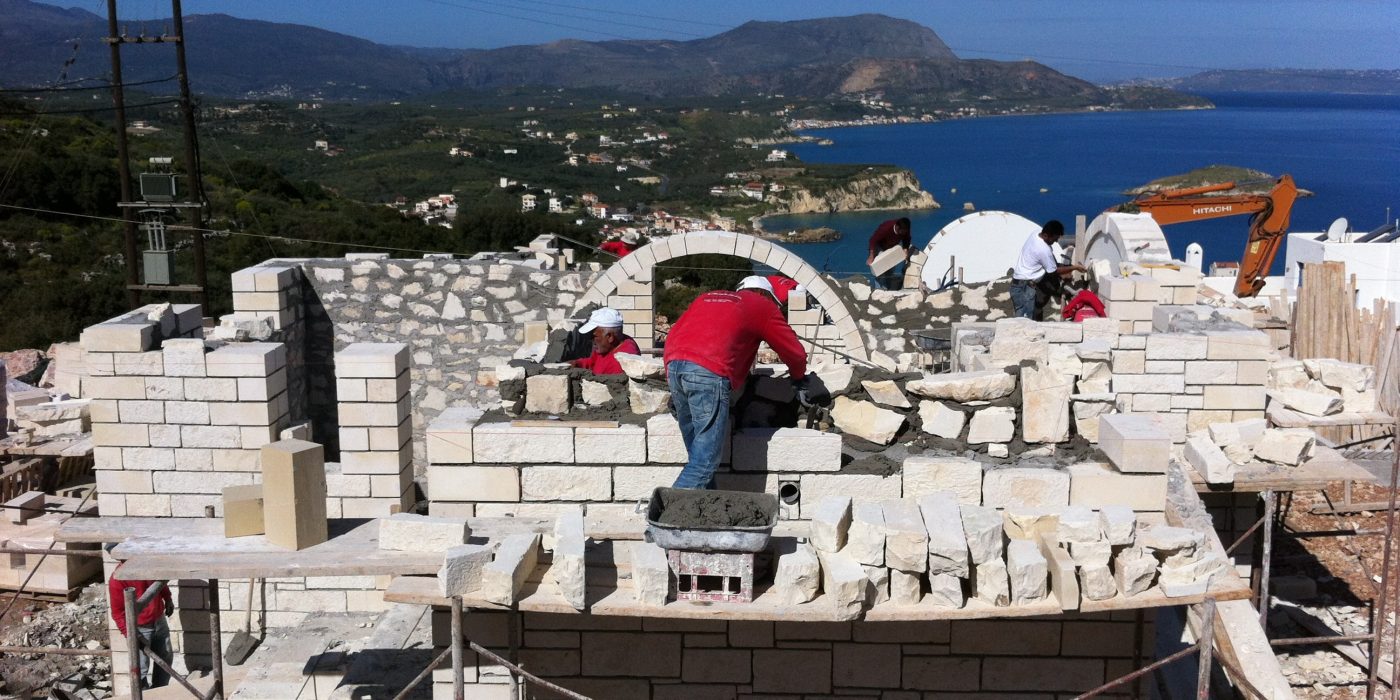Renovating a home in Crete is a journey that combines the charm of traditional Greek architecture with the comforts of modern living. Whether you’ve purchased a quaint village house, a seaside villa, or an old stone farmhouse, transforming your property can be both rewarding and challenging. This guide will help you navigate the process, offering tips on planning, design, and execution to create a beautiful and functional home that reflects the unique character of Crete.
Understanding the Local Architecture
1. Embrace Traditional Elements: Cretan homes are known for their distinct architectural features, such as stone walls, wooden beams, and terracotta roofs. Embracing these traditional elements can preserve the character of your home while adding to its aesthetic appeal. Incorporate natural materials like stone, wood, and clay to maintain an authentic look.
2. Modern Comforts: While retaining traditional charm, it’s essential to integrate modern comforts. Focus on upgrading plumbing, electrical systems, and insulation to ensure your home is comfortable and energy-efficient. Installing modern amenities doesn’t mean compromising on style; many contemporary designs can complement traditional aesthetics.
Planning Your Renovation
3. Set Clear Goals: Begin by outlining your renovation goals. Are you looking to restore the property to its original glory, or do you want to create a blend of old and new? Determine which areas need structural work, cosmetic updates, or complete overhauls. Setting clear objectives will guide your planning and budgeting process.
4. Budget Wisely: Establish a realistic budget that covers all aspects of the renovation, including materials, labor, permits, and unexpected costs. It’s advisable to allocate an extra 10-20% for contingencies. Research local costs and get multiple quotes from contractors to ensure you get the best value for your money.
5. Hire Local Expertise: Hiring local architects, builders, and craftsmen who understand Cretan architecture and building practices can make a significant difference. Their knowledge of local materials and techniques, as well as their familiarity with local regulations, can streamline the renovation process and help avoid common pitfalls.
Navigating Legal and Regulatory Requirements
6. Permits and Regulations: Ensure you obtain all necessary permits before starting your renovation. This may include planning permission, building permits, and, in some cases, archaeological clearance if your property is located near historical sites. Working with a local architect or lawyer can help you navigate these requirements.
7. Historical Preservation: If your property is of historical significance, you may be subject to additional regulations aimed at preserving its heritage. This could limit certain changes but also provides an opportunity to restore and highlight historical features that add value and charm to your home.
Design and Execution
8. Respect the Surroundings: Consider the natural landscape and local environment in your design. Cretan homes often feature outdoor living spaces that blend seamlessly with the natural surroundings. Incorporate terraces, patios, and gardens that take advantage of Crete’s beautiful weather and stunning views.
9. Sustainable Practices: Adopt sustainable building practices to enhance energy efficiency and reduce environmental impact. Use local, natural materials, install energy-efficient windows and appliances, and consider renewable energy sources such as solar panels. These practices not only benefit the environment but also reduce long-term utility costs.
10. Interior Design: For the interior, blend traditional Cretan elements with modern design for a harmonious look. Use a color palette inspired by the island’s natural beauty, incorporating shades of blue, white, and earthy tones. Decorate with local crafts, pottery, and textiles to add authentic touches to your home.
Managing the Renovation Process
11. Project Management: Effective project management is crucial to keeping your renovation on track. Maintain regular communication with your contractors and schedule regular site visits to monitor progress. Address any issues promptly to avoid delays and ensure the project stays within budget.
12. Quality Control: Focus on quality workmanship and materials to ensure your renovation stands the test of time. Inspect the work regularly and don’t hesitate to ask for corrections if something doesn’t meet your standards. Investing in quality now can save you time and money on repairs in the future.
13. Completion and Finishing Touches: As your renovation nears completion, pay attention to the finishing touches that make a house feel like a home. Landscaping, lighting, and final decor can significantly enhance the overall look and feel of your property. Celebrate the completion of your renovation with a traditional Cretan housewarming party, inviting neighbors and friends to share in your achievement.
Conclusion
Renovating a home in Crete is an exciting opportunity to create a unique living space that combines the island’s rich architectural heritage with modern comforts. By respecting traditional design elements, adhering to local regulations, and incorporating sustainable practices, you can transform your property into a beautiful and functional home. With careful planning, a realistic budget, and the help of local experts, your dream of living in a stunning Cretan home can become a reality. Embrace the journey, and enjoy the process of crafting a home that reflects the beauty and charm of Crete.


